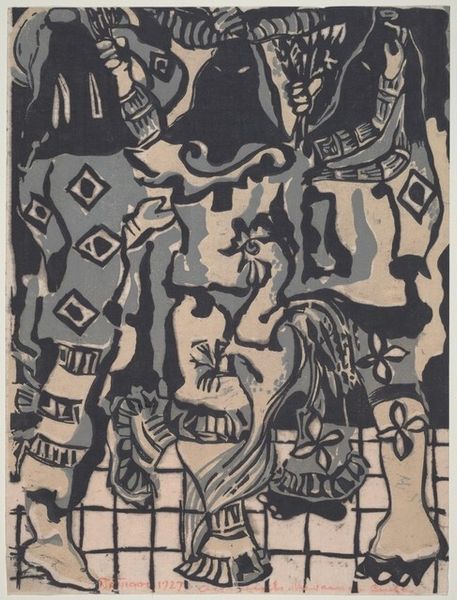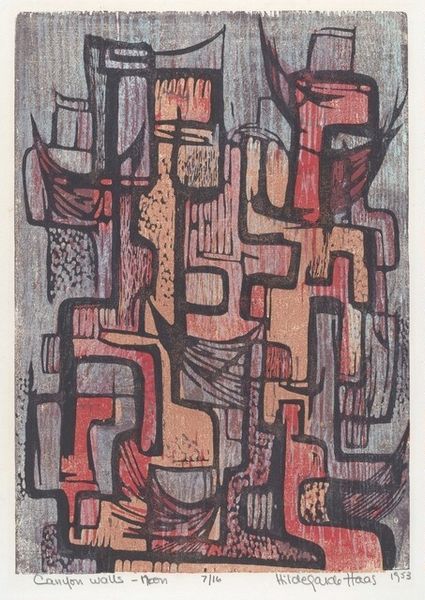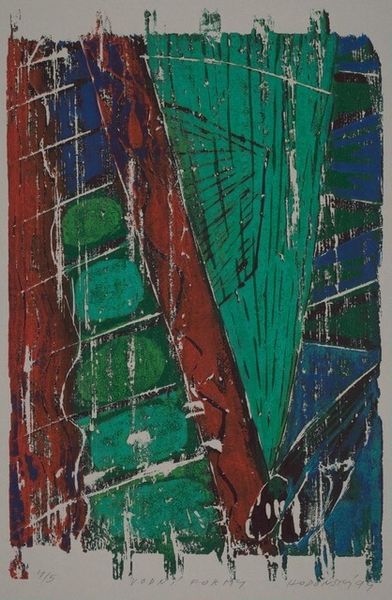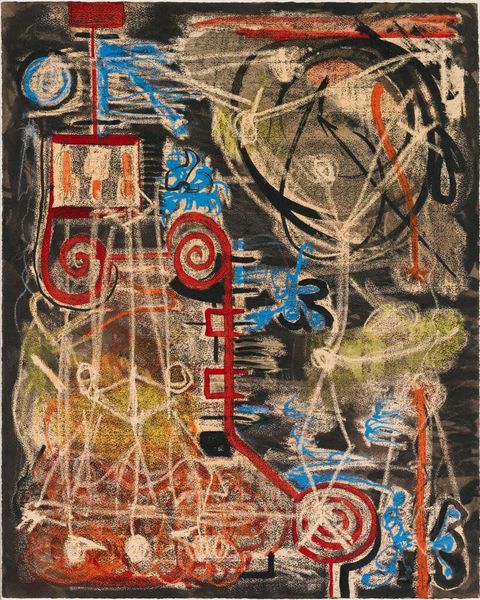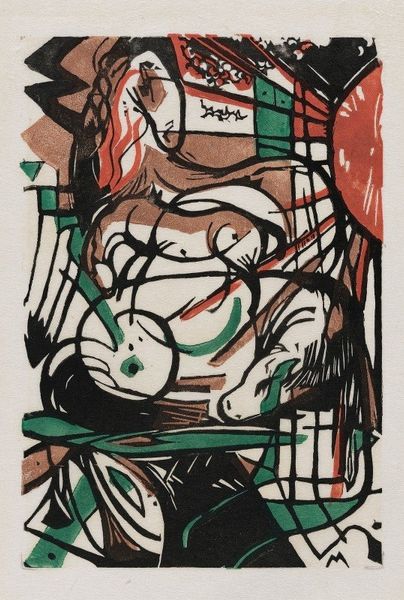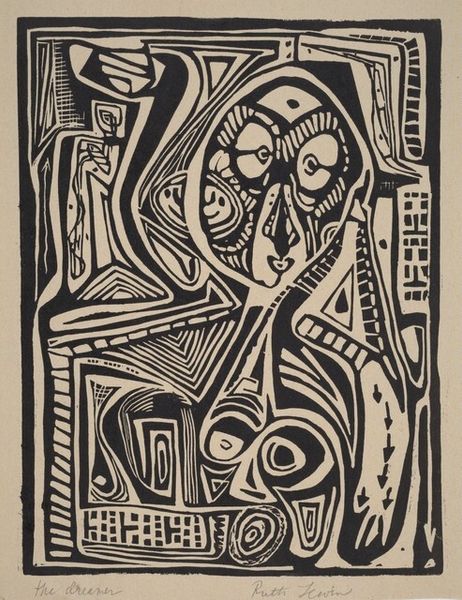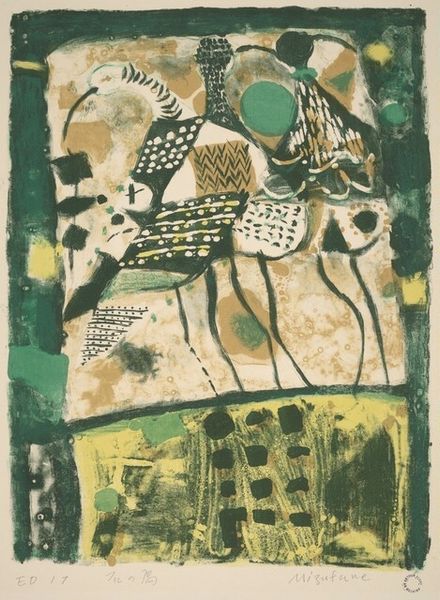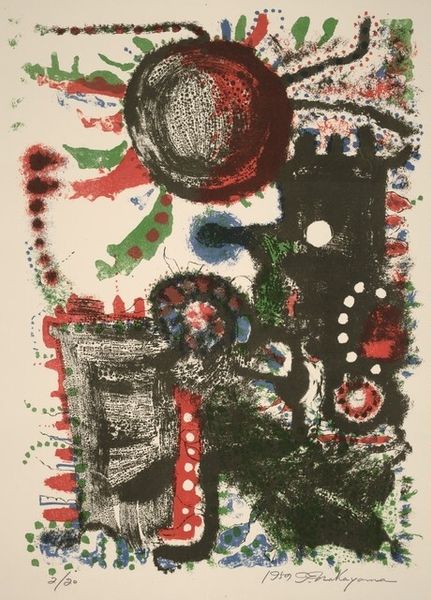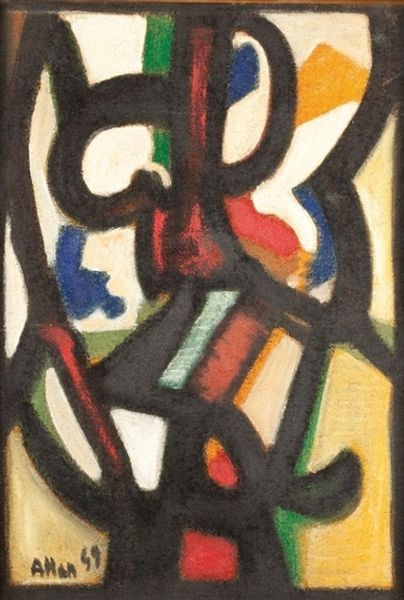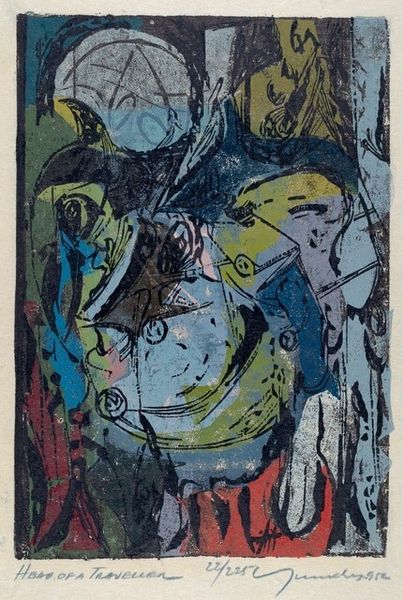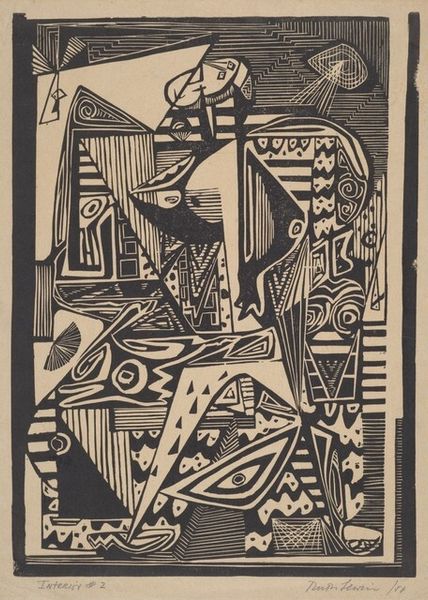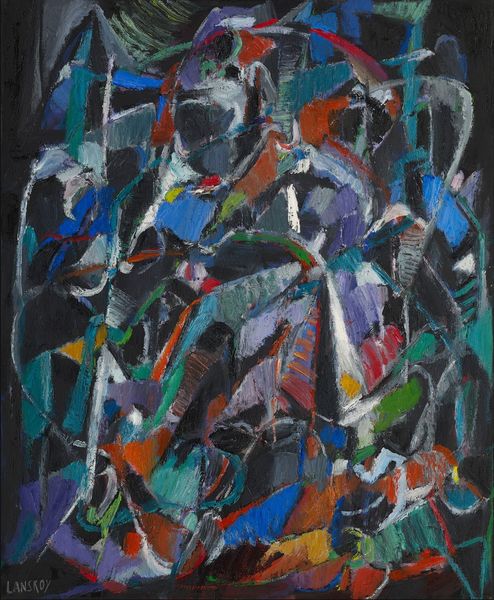
print, woodcut
#
portrait
#
cubism
# print
#
graffiti art
#
figuration
#
form
#
geometric
#
woodcut
Dimensions: Image:251 x 196mm
Copyright: National Gallery of Art: CC0 1.0
Curator: This is Howard Daum’s woodcut print, "Greenface," created in 1946. Editor: Striking! It feels like a mask, something ancient and ritualistic. The sharp angles and stark contrasts are incredibly bold, unsettling even. Curator: Daum's use of cubist and figurative styles invites interpretations related to the social disruptions following the Second World War. Many artists sought new ways to represent fractured realities during that time. Editor: Green is an unusual choice, particularly considering the period. It's the color of envy, sometimes sickness, yet it's also vibrant and life-affirming. The geometrical composition seems like it’s trying to communicate an unstable sense of self. It could symbolize the inner turmoil of the post-war person. Curator: Indeed. The proliferation of abstract figuration, especially after the war, reveals society's anxieties towards identity and form. Museums became stages where these uncertainties were negotiated. The 'green face' could critique standardized expectations prevalent in the public sphere. Editor: It really works! And the woodcut adds to its rawness. It's like Daum carved out these fragmented identities and gave form to unspoken sentiments. Curator: A potent method of cultural commentary, absolutely! Works like “Greenface” question the idealized images promoted, revealing much about the complex relationship between art and the shaping of social consciousness. Editor: I see this piece embodying society's grapple with defining what is real. A face becomes an iconic symbol loaded with layered cultural meaning. Curator: Understanding these perspectives brings Daum’s print, "Greenface," to life. Editor: It makes you rethink what the green could represent.
Comments
No comments
Be the first to comment and join the conversation on the ultimate creative platform.
